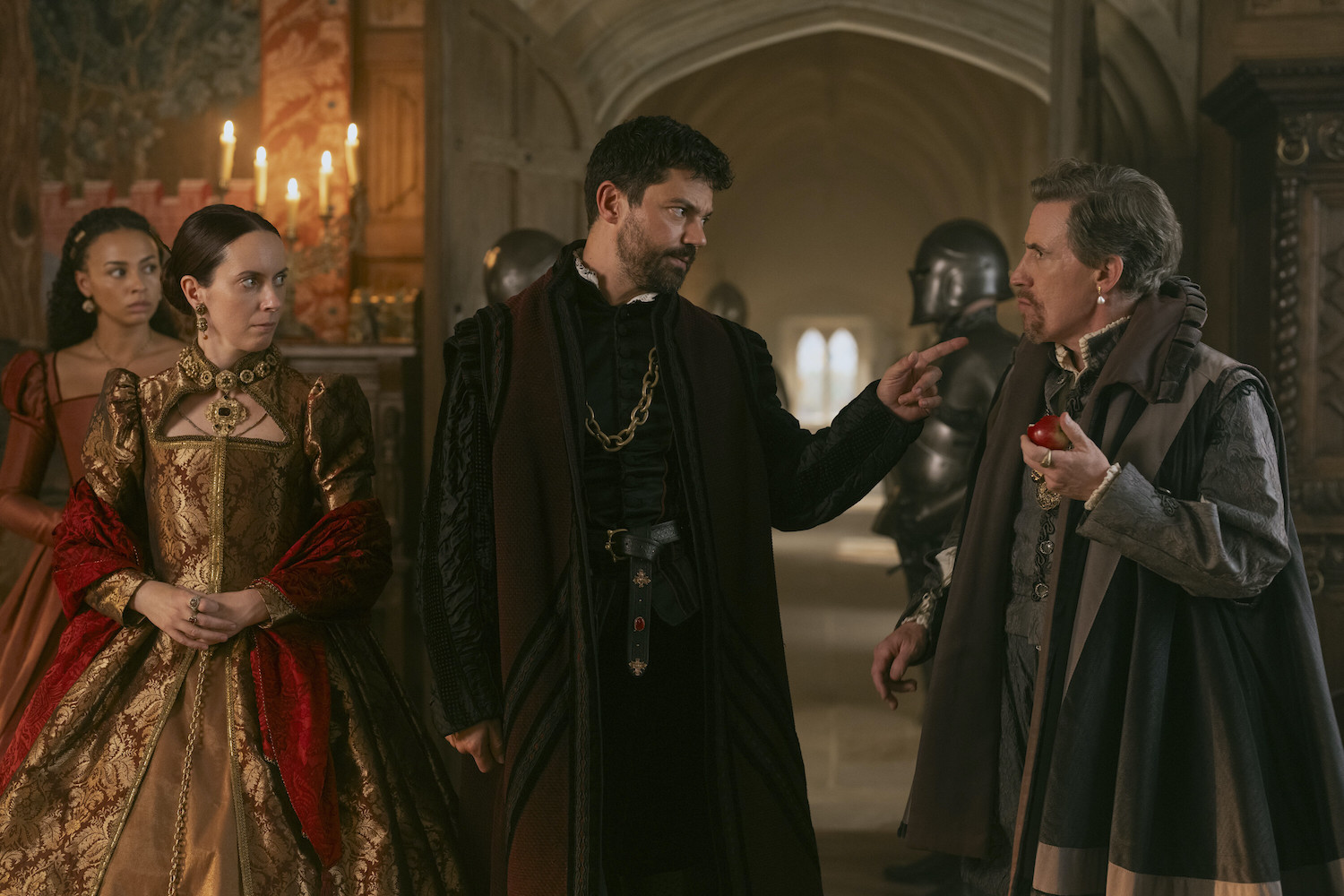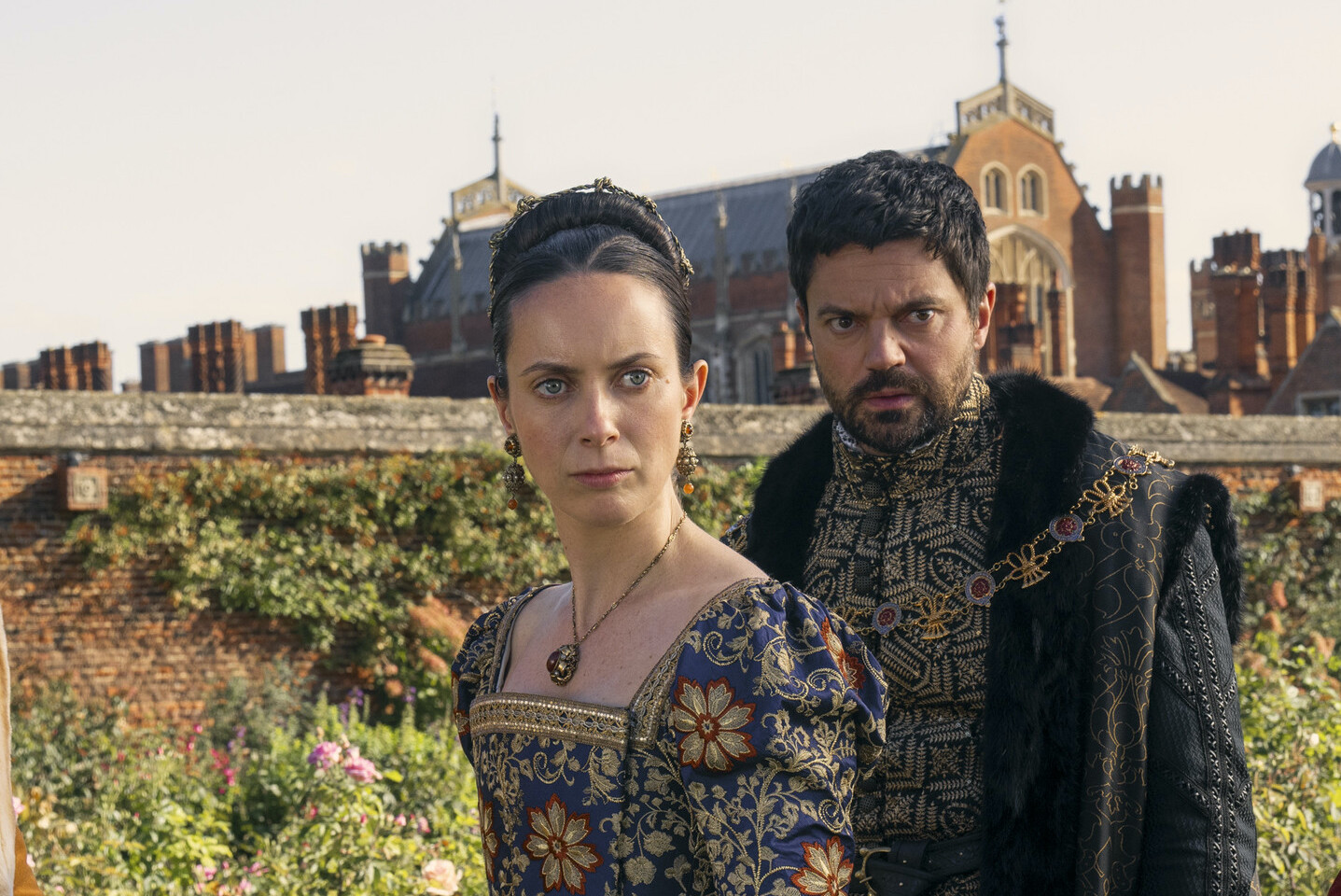An alternate version of the Tudor era is presented in Prime Video’s ‘My Lady Jane,’ where we see things happen in a different manner while politics and scheming rage in the court of King Edward VI. Following the death of his father, Henry VIII, Edward, his only son, becomes king, but that doesn’t mean that his enemies should lose all hope. Conspiracies abound, and this leads to some unlikely alliances, which get even weirder in the fantasy-laced world presented in the TV show that presents a very different take on the stories. The story’s primary antagonist is Mary Tudor, who is revealed to have been conspiring with Lord Seymour to get herself on the throne. However, this is a twisted misrepresentation of facts created only to serve the plot of the fictional series.
Lord Seymour is Said to Have Courted the Other Princess
In ‘My Lady Jane,’ Mary Tudor is the second-in-line after Edward VI. Rather than wait for her half-brother to die of natural causes, she decides to take matters into her own hands and conspires against him. In this, she is aided by Lord Seymour, with whom she also has a sexual relationship. As entertaining a plot device as it is, it is a completely fabricated part of the story, and in real life, Mary had no romantic relations with anyone from the Seymour family. Her half-sister, however, has a different story.

The Seymour family came into focus when Henry VIII married Jane Seymour, who bore him his first and only son, Edward. Jane died soon after, and Henry moved on to other wives. However, Jane’s Connection brought her brothers, Edward and Thomas, into focus. When Edward VI became king, his uncle, Edward Seymour, was made Lord Protector. The king was also fond of his other uncle, Thomas, who was known to be much more charismatic and likable. Edward Seymour is removed from the plot in ‘My Lady Jane,’ with more focus on Thomas Seymour and his affair with the princess.
In real life, Thomas Seymour is alleged to have full intentions of marrying Henry VIII’s daughter, but his eyes were set on the younger one, Elizabeth. They came into each other’s orbit via Catherine Parr, Henry VIII’s sixth and last wife. She and Thomas had been romantically linked previously, but when she caught the king’s eye, she had to marry him. Months after Henry died, Catherine and Thomas got married. At the same time, the young Elizabeth was placed under the care of her stepmother, so when Catherine got married to Thomas, the three of them found themselves under the same roof.
Thomas Seymour is said to have actively pursued Elizabeth, from mildly flirting with her to showing up in her bedchambers in the early hours of the morning when she was barely dressed to, at one point, cutting her dress in a hundred pieces as his wife held her still. The point to be noted is that Thomas Seymour was twenty-five years older than the teenage princess.
Thomas Seymour Wanted to Elevate His Status Through Marriage
One of the main reasons behind his dogged pursuit of Elizabeth was his desire to use her to gain more influence in court. At the time, Elizabeth was second-in-line to the throne, following Mary, and the prospects of her being the monarch were pretty slim. Still, Elizabeth and Edward were on great terms, and Thomas hoped to use that connection to his own ends. He is said to have proposed marriage to the princess at least twice, but the biggest hurdle in his path was his own brother, Edward Seymour, who saw through his intentions and refused to give permission that was mandatory for him to marry Elizabeth.
His desperation to marry Elizabeth led him to do something that would eventually prove fatal to him. It remains uncertain, though historians largely agree that when Thomas Seymour tried to break into King Edward VI’s rooms that fateful January night of 1549, his intention was to make the king agree to his betrothal to Elizabeth. Others, however, argue that he wanted to kill Edward, presumably because it would clear the path for him to push for Elizabeth’s claim to the throne, with whom he would certainly hold much more influence in the court. Whatever his intentions may have been, when he was caught, he was sent to the Tower of London, put on trial, and eventually beheaded for treason.
Read More: What are Ethians And Verity in My Lady Jane?


You must be logged in to post a comment.